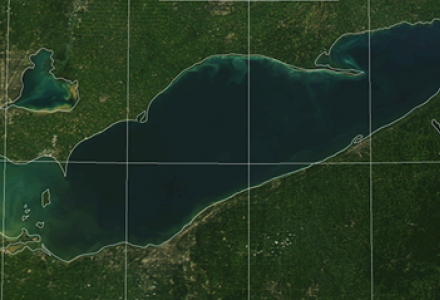
In November 1998, the Canadian and United States governments affirmed a new approach for understanding and cooperatively addressing shared water concerns along the boundary: the International Watersheds Initiative, or IWI.
Proposed by the IJC in its report “The IJC and the 21st Century,” the program has shaped how the IJC and people in transboundary regions have worked together over the last 25 years.
Throughout 2023, the 25th anniversary for the program, we’ll be highlighting different aspects of the IWI and what makes it such a powerful approach in these shared waters.
But first, the IWI deserves an introduction.
The program stems from a 1997 request from the two federal governments for the IJC to develop an approach to help the countries meet their environmental responsibilities under the 1909 Boundary Waters Treaty into the new millennium.
This included a particular emphasis on emerging issues, including those driven by climate change (such as extreme water events and their impact on water quality and aquatic ecosystems). In the “IJC and the 21st Century” report, the IJC recommended a “watershed approach” to handling water issues along the international boundary.
In practice, a watershed approach considers all the different aspects of these water systems from a hydrological perspective and looks for solutions to problems with this broader view in mind. These emerging issues can include contamination, invasive species, climate change and more—the IWI recognizes that all of these aspects of the watershed are linked, and the most effective approach to addressing them is to take those relationships into account.
A key component of any watershed is its people. The IWI program succeeds by building local relationships which provide a basis for understanding the issues and leveraging informed perspectives to prevent disputes before they become significant problems. This is water diplomacy at its best, and the IWI has proven itself to be a model for international water strategy.
Over the ensuing years, the IJC worked with the two governments to establish watershed boards in three transboundary basins: the Red River, the St. Croix River and the Rainy-Lake of the Woods system. A pilot watershed board was established in the Souris River basin.
Many of these areas were previously home to separate IJC boards managing water levels and flows and those monitoring water quality. Through the IWI, all these responsibilities were linked. This approach offers a more effective way of dealing with new and emerging threats than traditional methods.
Watershed boards under the IWI approach provide a significant opportunity for Indigenous and state, provincial and local governments to participate.
“This is important, particularly as the previous boards had limited diversity—and certainly a lack of Indigenous representation,” as noted by Frank Ettewageshik and Emma Norman in the book The First Century of the International Joint Commission.
“This approach differs from earlier IJC governance models as it attempts to view borders as hydrological rather than political; it includes sub-national players, and it adopts a ‘proactive’ rather than ‘reactive’ approach.”
These watershed boards are designed to bring together representatives from local communities, Indigenous Nations, industry, regulators, other stakeholders and dam operators to ensure everybody has a seat at the table when discussing problems and potential solutions facing their watersheds.
Working alongside existing local organizations, these boards are uniquely positioned to provide objective, in-depth scientific research and communally agreed-upon recommendations. This is a framework for moving beyond traditional, top-down binational approaches to embrace a greater emphasis on local perspectives. The IJC aims to eventually bring all of its boards, where applicable, toward the IWI’s watershed board approach.
The IWI goes beyond just the structure of these watershed boards, however.
Through the IWI, the IJC supports projects across the transboundary region that align with the tenets of the initiative and an individual board’s responsibilities. Projects allow both watershed boards and the IJC’s other boards to work with other agencies and organizations in their basins to research specific issues, such as fish passage in the St. Croix River, water quality issues in the Red River, or how water flows may impact plants important to Indigenous Peoples along the Rainy River.
The results of these studies help decision makers on both sides of the border make choices that reflect how interconnected these water systems are. The IWI also has been instrumental in some broad-based scientific initiatives, such as harmonizing geospatial and scientific data collected by Canadian and US agencies, creating computer models to show how nutrients move throughout watersheds and developing a framework to help boards address potential impacts from climate change.
These IWI projects can benefit those who participate with IJC boards and have been shown to have an outsized impact on research and policy. The IWI is able to help leverage outside funding and expertise thanks to in-kind contributions and partnerships.
The IJC’s staff and board members are working together to ensure that the IWI thrives over the next quarter century. The IJC’s experience has shown that the IWI has been a valuable approach to navigating the water challenges of the 21st century and deserves accolades on this anniversary.

Kevin Bunch is a writer-communications specialist at the IJC’s US Section office in Washington, D.C.




